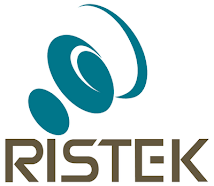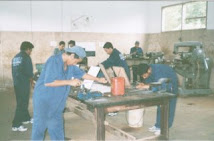
Menumpas Penyakit dengan Nanoteknologi
“If I never try, I’ll never know.”
Jangan takut bila kita dihadapkan pada suatu kesempatan dan kita bingung untuk mencobanya atau tidak.
Walau pun hasil dari mencoba ternyata mengecewakan,, tak usah sedih. at least kita punya pengalaman baru dan pelajaran yang akan membuat kita lebih dewasa.
Himpunan Mahasiswa Nanoteknologi Indonesia
Visi
Menjadikan Mahasiswa Indonesia berkemampuan iptek yang berdaya saing secara global melalui jejaring nanoteknologi.
Misi
* Melakukan pelatihan, seminar, kerjasama di tingkat nasional maupun internasional, dan kegiatan lain yang mendukung pengembangan nanosains dan nanoteknologi di Indonesia.
* Mengoordinasi dan mengkomunikasi penelitian lintas institusi keilmuan dalam bidang nano sehingga terjadi sinergisitas untuk memajukan IPTEK yang berdaya saing melalui jejaring nano (Nano-Network).
* Melakukan studi roadmap untuk penguasaan dan implementasi nanosains dan nanoteknologi, juga untuk isu-isu strategis dalam nanosains dan nanoteknologi, dan memberi masukan/saran kepada pemegang kepentingan terkait (Nano-Strategy).
* Kajian trend penelitian nano di dunia untuk menjaga kesinambungan informasi dalam hal IPTEK nano (Nano-Trend).
* Meningkatkan sosialisasi dan membangun kesadaran akan pentingnya penguasaan nanosains dan nanoteknologi dalam skala yang lebih besar melalui diskusi dan kurikulum sekolah (Nano-Education).
Program-program
1. Membangun jaringan penelitian nano teknologi di indonesia
2. Membangun Pusat Pendidikan Nanoteknologi Indonesia
3. 10 Tahun Kedepan tiap Provinsi mempunyai SMK Nano Teknologi Indonesia
4. 18 Tahun Mendatang Indonesia Mempunyai 800 Orang Peneliti Profesional Bidang Nano Teknologi
5. Memasyarakatkan Teknologi Nano
University researchers have built nanoparticles designed to cling to artery walls and slowly release medicine - a breakthrough that could help fight heart disease.
Scientists at MIT and Harvard Medical School yesterday announced that they teamed up to create what they're calling "nanoburrs," nanotechology that sticks to arteries the way that pesky burrs in the woods stick to your clothes. Researchers are hoping the nanoburrs can offer an alternative to surgically implanting arterial stents that, over time, release drugs to treat or prevent plaque build up on artery walls.
Plaque build-up, also known as atherosclerosis, is the leading cause of heart attacks and stroke. According to the American Heart Association, 831,272 people died in the United States in 2006 because of heart disease. That adds up to about one in three deaths.
"This is a very exciting example of nanotechnology and cell targeting in action that I hope will have broad ramifications," said MIT Institute Professor Robert Langer who is working on the project.
The nanoburrs, according to MIT, are designed to target a specific part of the artery, known as the basement membrane. The membrane lines the arterial wall but is only exposed when the artery is damaged. With the nanoburrs honing in on the membrane, they will only go after the damaged parts of the arteries.
Nanotechnology has been a key part of a lot of medical research in the past few years.
A team of British researchers announced earlier this month that they are set to begin a trial program by planting nanotechnology-based artificial arteries into humans. The artificial arteries are made of a polymer material that's combined with nanomaterials. Together, the materials can closely mimic natural vessels by pulsing along with the beating of the patient's heart.
Last October, Stanford University researchers reported that they had used nanotechnology and magnetics to create a biosensor designed to detect cancer in its early stages, making a cure more likely.
A month earlier, researchers at the University of Toronto announced that they had used nanomaterials to develop a microchip they say is also sensitive enough to detect early stage cancer. The chip is designed to detect the type of cancer and its severity.
In this latest research, the nanoburrs, which have been tested on rats so far, are injected intravenously.
"This technology could have broad applications across other important diseases, including cancer and inflammatory diseases where vascular permeability or vascular damage is commonly observed," said Omid Farokhzad, associate professor at Harvard Medical School and a researcher on the project.
Sources:
http://www.computerworld.com/s/article/9146078/Scientists_use_nanotech_to_prevent_heart_disease










